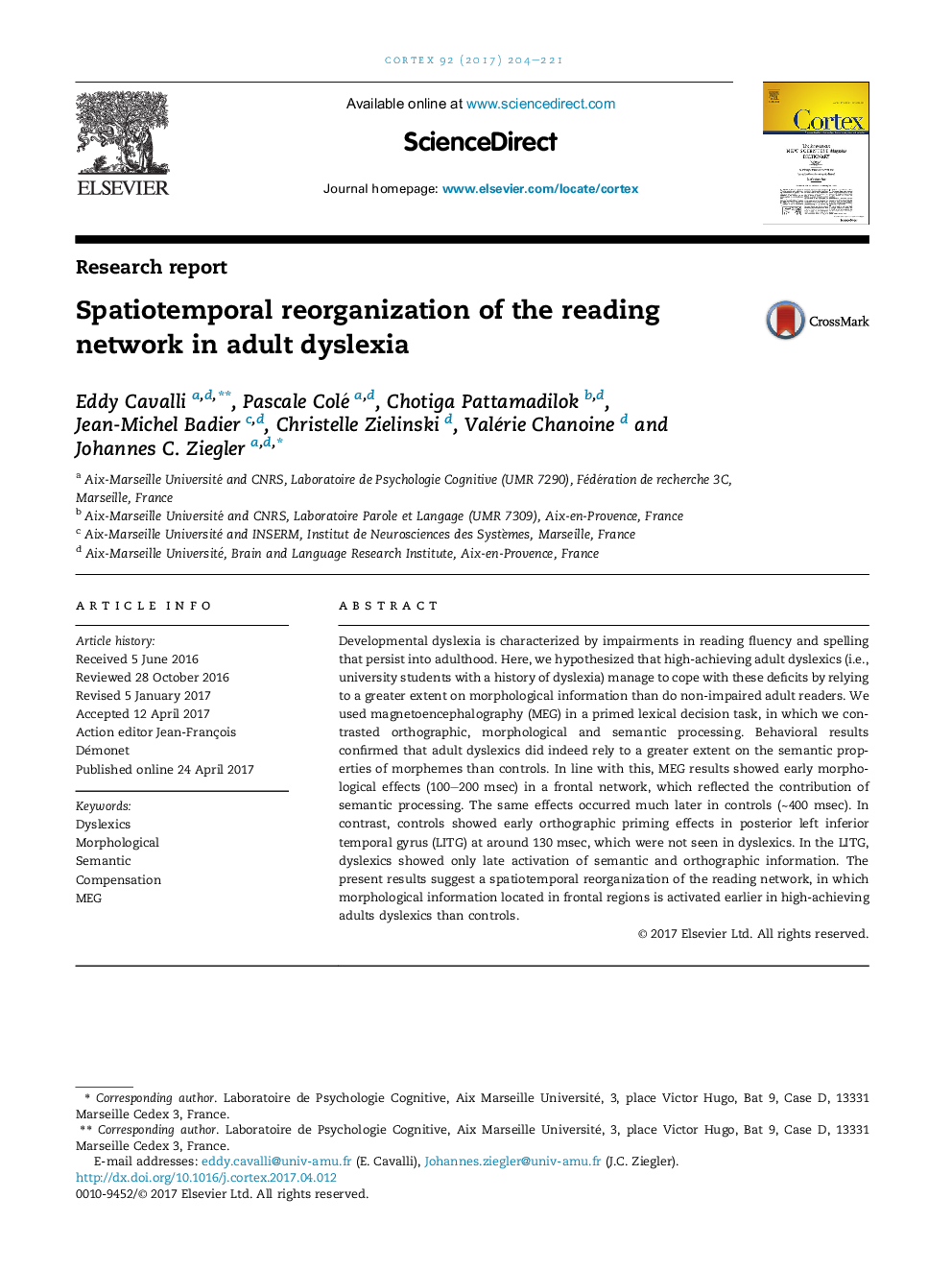| Article ID | Journal | Published Year | Pages | File Type |
|---|---|---|---|---|
| 5044503 | Cortex | 2017 | 18 Pages |
Developmental dyslexia is characterized by impairments in reading fluency and spelling that persist into adulthood. Here, we hypothesized that high-achieving adult dyslexics (i.e., university students with a history of dyslexia) manage to cope with these deficits by relying to a greater extent on morphological information than do non-impaired adult readers. We used magnetoencephalography (MEG) in a primed lexical decision task, in which we contrasted orthographic, morphological and semantic processing. Behavioral results confirmed that adult dyslexics did indeed rely to a greater extent on the semantic properties of morphemes than controls. In line with this, MEG results showed early morphological effects (100-200Â msec) in a frontal network, which reflected the contribution of semantic processing. The same effects occurred much later in controls (â¼400Â msec). In contrast, controls showed early orthographic priming effects in posterior left inferior temporal gyrus (LITG) at around 130Â msec, which were not seen in dyslexics. In the LITG, dyslexics showed only late activation of semantic and orthographic information. The present results suggest a spatiotemporal reorganization of the reading network, in which morphological information located in frontal regions is activated earlier in high-achieving adults dyslexics than controls.
